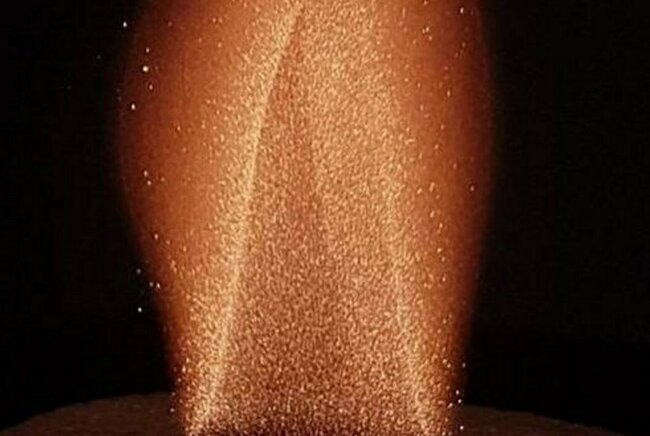Cleaning up energy production by a better understanding of hydrocarbon combustion
Robin Doddema defended his PhD thesis at the department of Mechanical Engineering.

As the world moves to clean energy sources, it is unrealistic to expect that we can completely abandon hydrocarbon combustion any time soon. It is therefore urgent to continue developing new ways of making traditional combustion as clean and as efficient as possible. PhD student Robin Doddema has developed new ways of understanding the formation of soot in laminar flames, using optical diagnostics.
The world is in the middle of an energy transition. The intention of this transition is to move away from fossil fuels, towards more sustainable and environment-friendly energy sources - and carriers - that are low in carbon. In this regard, the combustion of hydrocarbon fuels has obtained a bit of a bad reputation.
Performing research on hydrocarbon combustion, therefore, is perceived as something obsolete, an activity of scientists from in the past. But even though there is, at least in ‘Western’ countries, a strong drive towards these so-called renewable fuels, due to the world-wide dependency of energy production on hydrocarbon fuels, it is unrealistic to expect a quick goodbye to hydrocarbon combustion.
Furthermore, despite the long history of research in the field of combustion, still not all phenomena are fully understood. Thus, it still makes sense to put effort into combustion research, to continue the improvement of hydrocarbon fuel burners, increasing efficiency and fuel flexibility, and decreasing pollutant formation.
Sooting flames
Robin Doddema's research focuses on the early stages of soot formation in laminar flames of various fuels containing a small fraction of aromatic hydrocarbons (toluene). These flames are formed on a burner with a central fuel nozzle and surrounding co-flowing air, i.e., fuel and oxidizer are non-premixed.
Resulting sooting flames have a candle-like appearance (and size). Robin Doddema focused his research on the flames’ thermal decomposition zone using optical diagnostics. He created an experimental setup with a focused laser beam that travels through the flame along its vertical axis, entering the flame from below. This allows the collection of laser-induced light emission with height in the flame.
Raman scattering
Upon passing through the flame, some of the laser light is scattered inelastically, known as Raman scattering. This Raman scattering process suffers from very poor scattering efficiency – only about 1 in a million photons is inelastically scattered –, which is why high power lasers are required combined with gated cameras to make the Raman scattered light discernable against the luminous background of the flame itself.
Spectrally resolving the Raman scattered light allows the identification of the scattering molecular species, but more importantly, one can derive quantitative data such as the local gas temperature and number densities of the scattering molecules. Due to the inefficient nature of Raman scattering, only molecular species present in considerable quantities (“major species”) can be observed.
Doddema studied flames fueled by various fuels, including gaseous and vaporized liquid hydrocarbons, but also hydrogen combined with ammonia. Doing so, he was able to collect valuable quantitative data. However, the results were restricted to the lower end of the flame, as the formation of polycyclic aromatic hydrocarbon molecules and eventually soot, limits the applicability of this optical diagnostic approach.
High-quality data
He developed a novel way to collect high-quality Raman spectra over a broad range of temperatures: doping small amounts of the fuel of interest to a hydrogen/nitrogen mixture, and combusting it in the setup described.
The rapidly outward diffusing hydrogen oxidizes at the periphery of the flame, this way creating the high-temperature but low-oxygen boundary conditions for the (heavier) fuel components of interest. The Raman spectrum of hydrogen is relatively clean and well known, allowing high quality spectra of the doped fuel to be acquired over a range of temperatures.
Decomposing molecules
This endeavor also helped to explain an observation in earlier laser-diagnostic experiments: judging from the disappearing and reappearing laser-induced-fluorescence of fuel-doped toluene molecules in a methane flame, the toluene molecules appeared to decompose first, before being formed again as small poly-cyclic aromatic hydrocarbons. Using again Raman scattering this hypothesis could be rejected.
Title of PhD thesis: Spectroscopy on the verge of soot formation, Supervisors: Nico Dam and Niels Deen.
Media contact
More on Sustainability



Latest news


